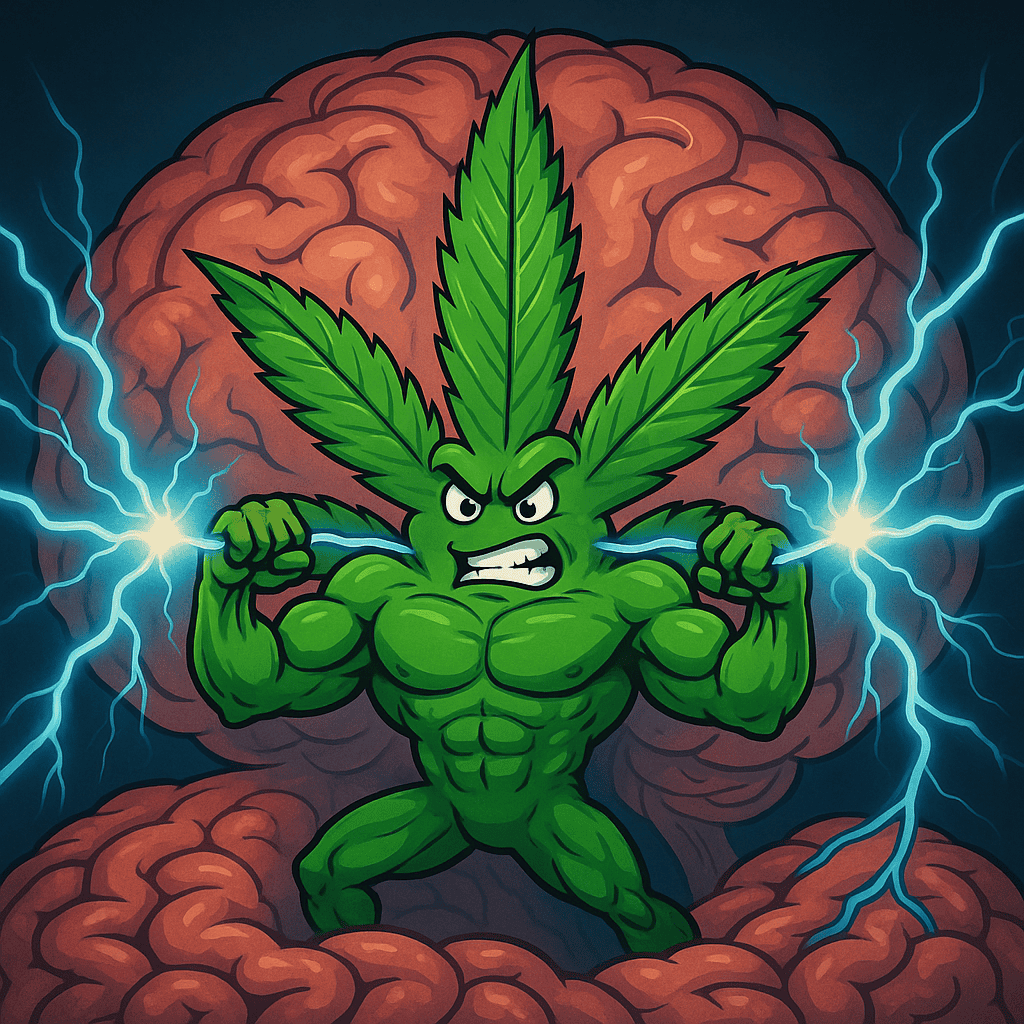THC and CBD are often misunderstood when talked about in terms of cures, treatments or relieving symptoms. Cannabis used as a medical treatment can do great things, yet how far does it go. Read about the mechanism, paradox, evidence and stories of cautious hope in the cannabis world.
The Science
Why Cannabis Is Considered Neuroprotective
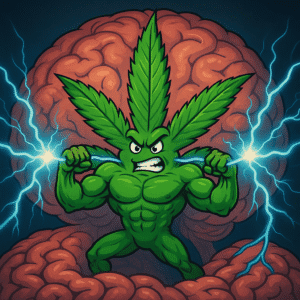
Endocannabinoid system = homeostasis guardrails (the bodies guidance system). CB1 receptors (mostly neurons) dampen glutamate “overdrive” (excitotoxicity), stabilize calcium influx, and support mitochondrial function. Link
Basically: Cannabis basically absorbs unhealthy ROS mitochondrial (reactive oxygen species), the little power houses of your body that give your it the type of energy used for firing neural signals, keeping the brain and its memories alive. This mitochondrial release ROS (reactive oxygen species) naturally with age or with Parkinsons.
As well as: CB2 receptors sit mostly on immune cells in the brain (like microglia). When they’re activated by cannabinoids, they send the message: “Cool it, stop overreacting.” Link
Instead of the immune system staying stuck in “red alert” mode and constantly releasing inflammatory chemicals (which damages neurons over time), CB2 activation nudges those cells into a calmer, protective mode. Just like how you feel calm and collected after you have consumed cannabis.
Proteinopathy angles (AD & PD).
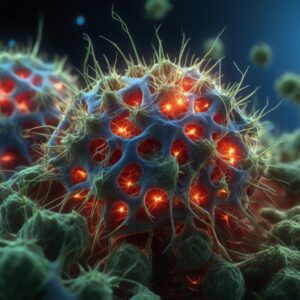
Preclinical and early translational data suggest cannabinoids (especially CBD, and CBD-forward combinations) can: curb Aβ and p-tau aggregation/transport (AD) and may influence α-synuclein toxicity pathways (PD), while also tamping down neuroinflammation around these aggregates. This can seem crazy complicated, so I’ll give you the English version. Link
Basically: In Alzheimer’s, sticky proteins (like amyloid-beta and tau) clump up and choke brain cells. In Parkinson’s, another protein (alpha-synuclein) does the same thing. This process is called proteinopathy (protein pile-ups that jam the brain’s machinery).
What early studies show is that cannabinoids, especially CBD and CBD-heavy mixes may:
Slow down the clumping of these bad proteins.
Reduce the toxic effects they cause once they start piling up.
Calm the surrounding inflammation, so brain cells aren’t under constant attack.
Terpenes aren’t just perfume. β-caryophyllene (a dietary terpene) is a CB2 agonist with anti-inflammatory/antioxidant effects in neuro models, one rationale behind “broad-spectrum” formulations.
Basically: There are chemicals inside cannabis (and everyday foods) called terpenes which each have a unique set of tools. On of them specifically mentioned above reduces inflammation and is also a antioxidant.
Bottom line:
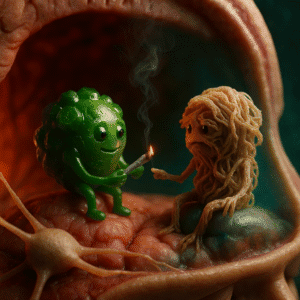
Cannabis shows several ways it could protect the brain, by calming overactive signals, reducing stress and inflammation, supporting energy production, and slowing harmful protein build-up. So far, studies suggest it can ease symptoms like agitation in Alzheimer’s, but we don’t yet have solid proof that it slows or stops the diseases themselves.
Cannabis relation to short term memory loss

THC is the main culprit here, overloading the CB1 receptors. The key is dosage, THC can create focus and calm in small dosages, yet high dosages create dopamine spikes that make you confused, disorientated and anxious.
So, when cannabis is used for clinical purposes (tests or treatments) CBD is most often used in high dosages and THC in lower dosages to decrease memory drag. THC works better as an anti-inflammatory, but large dosages cause other problematic symptoms. That is why full spectrum CBD is a popular healing product.
Real-World Human Studies (Short & Plain)
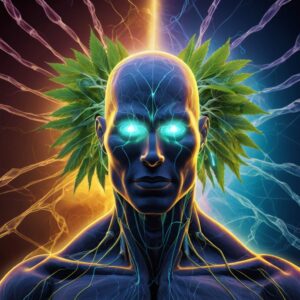
These are the most common results received when the following tests are done, to give you a general idea of dosage comparisons and effects on different conditions.
1. Alzheimer’s agitation — nabilone RCT (crossover, 14 weeks).
Nabilone: a lab-made cannabinoid that acts like THC (often prescribed for nausea or pain).
RCT: randomized controlled trial, the gold standard for testing a treatment. People are randomly split into groups to avoid bias.
Crossover: each participant tries both the treatment and the placebo at different times. So the same person acts as their own comparison.
Result: Those on nabilone were less agitated and had fewer behavior problems. Their caregivers also felt less stressed. Some patients got sleepy, so dose size matters.
Why it matters: It shows cannabis-based medicine may help manage tough symptoms, but it doesn’t mean it slows or reverses Alzheimer’s itself.
2. Parkinson’s disease — CBD-forward combinations (short-term).
What: People with Parkinson’s disease were given a mix that was mostly CBD with just a little THC, for a short trial.
Result: It was safe and tolerated well. No big improvements yet, but it showed this kind of treatment can be tested without major problems.
Why it matters: It’s an early step, more about proving safety and feasibility than proving benefits. Basically, this set the standard for stage 1 of testing. Done in a safe manner.
3. Parkinson’s disease — pure CBD, sublingual, 12-week RCT.
Sublingual: You place drops of oil or a dissolvable strip under your tongue, and the medicine absorbs directly into the bloodstream through tiny blood vessels there. It works faster than swallowing a capsule because it skips most of the digestive system.
What: People with Parkinson’s disease took pure CBD (no THC) under the tongue for 12 weeks.
Result: It was safe, and there were no big changes (good or bad) in movement, mood, or thinking.
Why it matters: It shows CBD alone is safe to use in Parkinson’s, but we still need more studies to see if it actually helps symptoms.
4. Cognitive safety caution in PD — CBD/THC combo.
What: People with Parkinson’s were given a medicine that combined CBD and THC in a carefully controlled trial.
Result: It was generally safe, but even short-term use showed a small drop in thinking ability.
Why it matters: It’s a warning sign that too much THC can make cognition worse in vulnerable patients, so formulas need to stay low-THC.
All in All
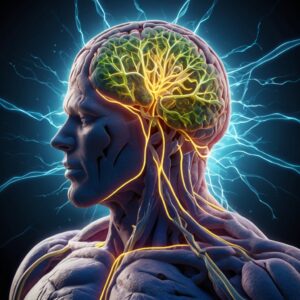
There is much to say about the subject, doing these tests proved many things, although there will be more detailed tests done in the future that clarify in more details the changes within a body under such degrading memory and motor function. What we know is this:
Cannabis-based treatments can be safe and sometimes helpful for symptoms in conditions like Alzheimer’s and Parkinson’s. Nabilone (a THC-like medicine) eased agitation in Alzheimer’s patients, while CBD-forward or pure CBD trials in Parkinson’s showed good safety and tolerance.

